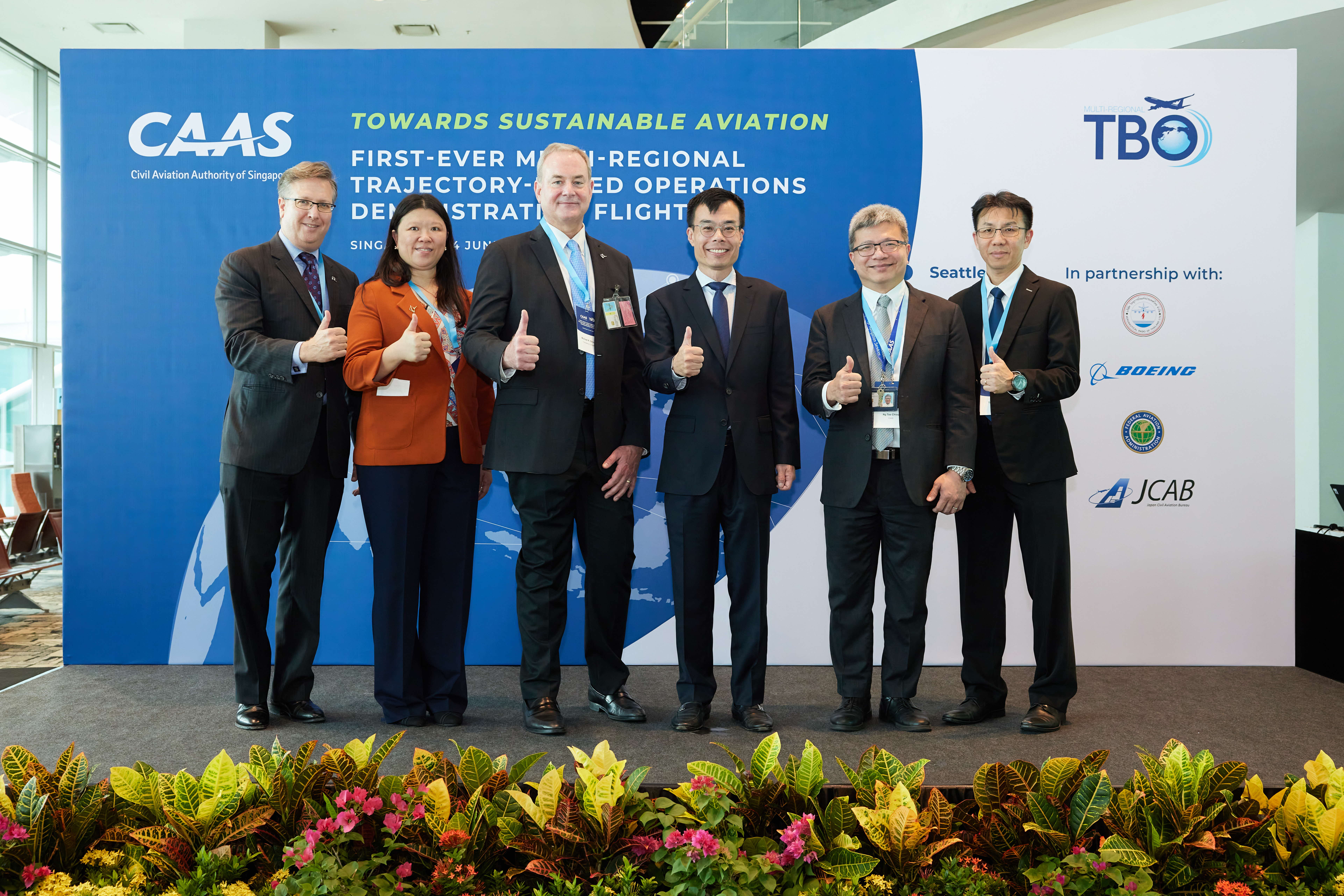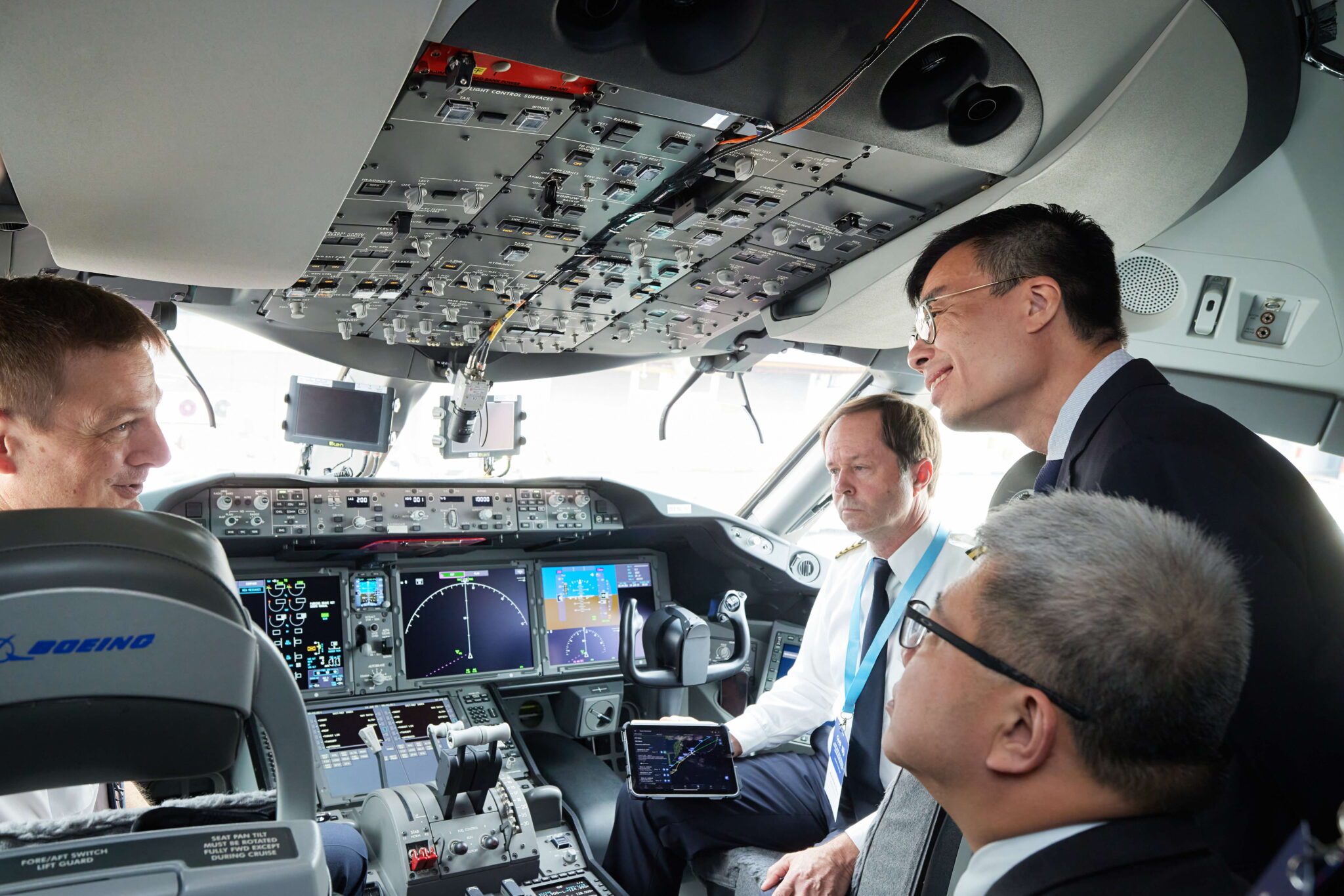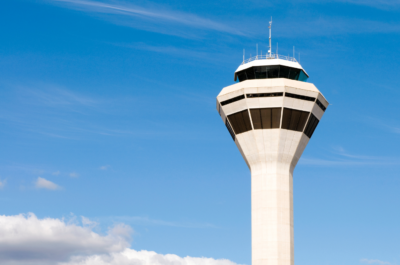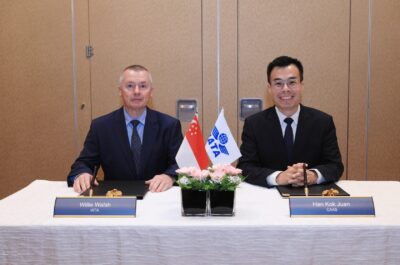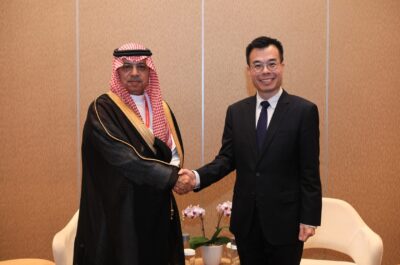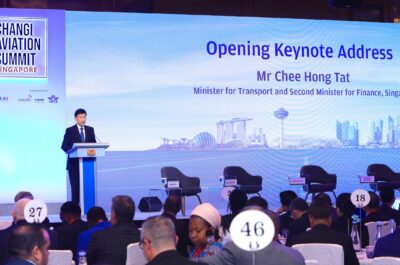This is part of a three-year collaboration programme, aimed at improving flight efficiencies and reducing carbon emissions, with potential to cut an aircraft’s fuel burn by up to 10%.
The Civil Aviation Authority of Singapore (CAAS) and the air navigation service providers (ANSPs) of Japan, Thailand and the United States (US) have successfully conducted the world’s first-ever multi-regional trajectory-based operations (TBO) demonstration flight, using a Boeing 787-10 ecoDemonstrator Explorer. The ANSPs and Boeing have also signed a Joint Declaration to reaffirm their commitment to make TBO a reality worldwide.
The demonstration flight started its journey from Seattle to Tokyo on 11 June 2023, and landed at the Singapore Changi Airport on 13 June 2023 at 8.08pm. It will depart Singapore for Bangkok on 14 June 2023. The demonstration flight is part of a three-year collaboration programme aimed at improving flight efficiencies and reducing carbon emissions, with the potential of cutting an aircraft’s fuel burn by up to 10%. The successful completion of the live demonstration flight will validate the technological capabilities that were developed and tested in a series of lab demonstrations which concluded in May 2022.
Today, international flights are managed through multiple Flight Information Regions (FIRs) by their respective ANSPs, with each ANSP acting separately and independently. Under TBO, ANSPs share information, such as on weather, airspace closures, and other traffic, and work together to plan and optimise an aircraft’s entire flight trajectory across FIRs from take-off to touchdown. The capabilities developed for these functions, including air and ground exchange of live flight information and the negotiation of flight trajectory between multiple ANSPs and the aircraft, are being tested in the demonstration flight. Multi-regional TBO is expected to fundamentally change the way air traffic is managed and yield significant benefits. These include improving safety and efficiency, minimising delays and disruptions, cutting travel cost and time, and reducing fuel burn and carbon emissions.
Mr Han Kok Juan, Director-General of the CAAS, said, “Singapore is pleased to partner Japan, Thailand and the US to develop and test new capabilities to improve flight efficiencies and reduce carbon emissions. This is a recognition of our position as a leading air hub and air navigation service provider, and pathfinder for sustainable aviation. With the signing of the Joint Declaration, we look forward to working closely with other air navigation service providers and industry partners to transform air traffic management and make the future of air travel a more sustainable one.”
Theodore is the Co-Founder and Managing Editor of TravelDailyNews Media Network; his responsibilities include business development and planning for TravelDailyNews long-term opportunities.
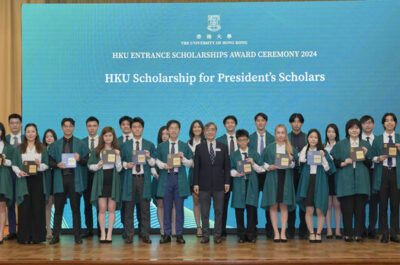



![[PR] PR_Ascott and Vimut Hospital_2024](https://www.traveldailynews.asia/wp-content/uploads/2024/04/PR-PR_Ascott-and-Vimut-Hospital_2024-400x265.jpg)








